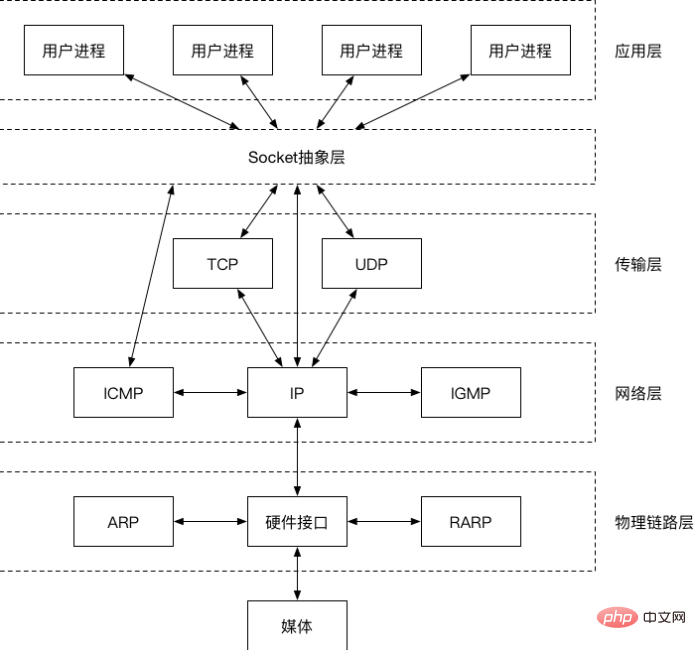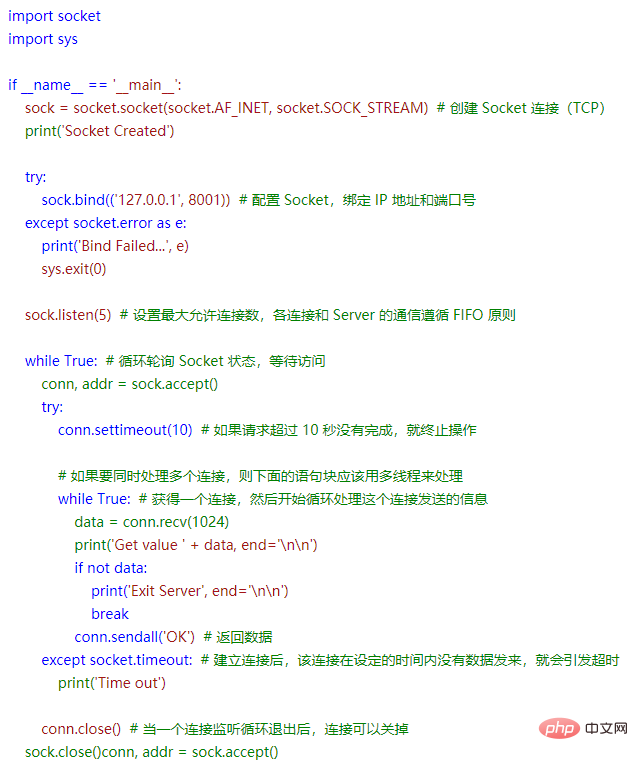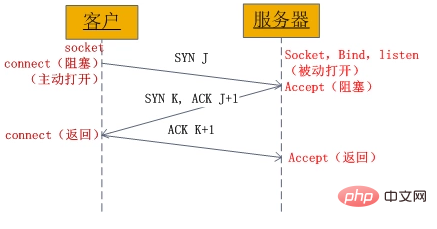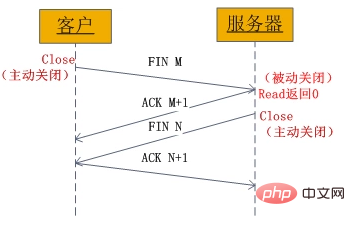

What is a socket?
Socket is an abstraction layer between the application layer and the transport layer. It abstracts the complex operations of the TCP/IP layer into several simple interfaces for the application layer to call the implementation process in the network. Communication. Socket originated from UNIX. Under the UNIX idea that everything is a file, inter-process communication is named file descriptor. Socket is an implementation of the "open-read/write-close" mode. Server and client Each client maintains a "file". After the connection is established and opened, content can be written to the file for the other party to read or the other party's content can be read. The file is closed when the communication ends.
The picture shows the location of Socket:

Socket communication process
Socket ensures that communication between different computers communication, that is, network communication. For websites, the communication model is communication between the server and the client. A Socket object is established at both ends, and then data is transmitted through the Socket object. Usually the server is in an infinite loop, waiting for the client to connect.
Related learning video tutorial sharing: php video tutorial
The following picture is a connection-oriented TCP timing diagram:

Client process:
The client process is relatively simple, create a Socket, connect to the server, and connect the Socket to the remote host (note: only TCP has the concept of "connection", some Sockets such as UDP, ICMP and ARP do not have the concept of "connection"), send data, read response data, until the data exchange is completed, close the connection, and end the TCP conversation.

The send() method is also available here: the difference is that sendall() will try to send all data before returning, and returns None when successful, while send() returns to send The number of bytes, an exception will be thrown on failure.
Server-side process:
Let’s talk about the server-side process. The server first initializes the Socket, establishes a streaming socket, and communicates with the local machine address and port. Bind, then notify TCP that it is ready to receive connections, call accept() to block, and wait for a connection from the client. If the client establishes a connection with the server at this time, the client sends a data request, the server receives the request and processes the request, and then sends the response data to the client, and the client reads the data until the data exchange is completed. Finally, the connection is closed and the interaction ends.

When accept() is called, the Socket will enter the waiting state. When the client requests a connection, the method establishes the connection and returns to the server. accept() returns a tuple with two elements (conn, addr). The first element conn is the new Socket object through which the server must communicate with the client; the second element addr is the client's IP address and port. data = conn.recv(1024)
The next step is the processing phase, where the server and client communicate (transmit data) through send() and recv().
The server calls send() and sends information to the client in the form of a string. send() returns the number of characters sent.
The server calls recv() to receive information from the client. When calling recv() , the server must specify an integer that corresponds to the maximum amount of data that can be received with this method call. recv() will enter the blocked state when receiving data, and finally return a string to represent the received data. If the amount of data sent exceeds what recv() allows, the data will be truncated. The excess data will be buffered on the receiving end. When recv() is called in the future, the remaining bytes will continue to be read. If there is excess data, it will be deleted from the buffer (as well as the client may have sent since the last call to recv() any other data). When the transmission is completed, the server calls Socket's close() to close the connection.
Look at the Socket process from the perspective of TCP connection:
TCP three-way handshake Socket process:

1. After the server calls socket(), bind(), and listen() to complete the initialization, it calls accept() to block and wait;
2. The client Socket object calls connect() and sends a message to the server. SYN and blocking;
3. The server completes the first handshake, that is, sends SYN and ACK responses;
4. After the client receives the response sent by the server, connect() Return and then send an ACK to the server;
5. The server Socket object receives the client's third handshake ACK confirmation. At this time, the server returns from accept() to establish a connection.
The next step is for the connection objects at both ends to send and receive data to each other.
TCP Socket process of four waves:

1. An application process calls close() to actively close and send a FIN;
2. After receiving the FIN, the other end passively executes the shutdown and sends an ACK confirmation;
3. Afterwards, the application process that passively executes the shutdown calls close() to close the Socket and also sends a FIN;
4. The end that receives this FIN acknowledges it with ACK from the other end.
Summary:
The above code simply demonstrates the use of basic functions of Socket. In fact, no matter how complex the network program is, these basic functions will be used. The above server code will only process one client request before processing the next client request. Such a server has very weak processing capabilities. In practice, servers need to have concurrent processing capabilities. In order to achieve concurrent processing, the server needs to fork. A new process or thread handles the request.
Recommended related articles and tutorials: php tutorial
The above is the detailed content of How to understand php socket. For more information, please follow other related articles on the PHP Chinese website!